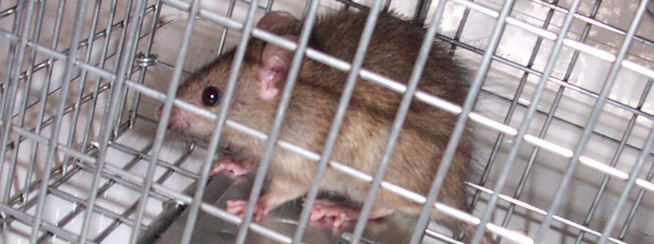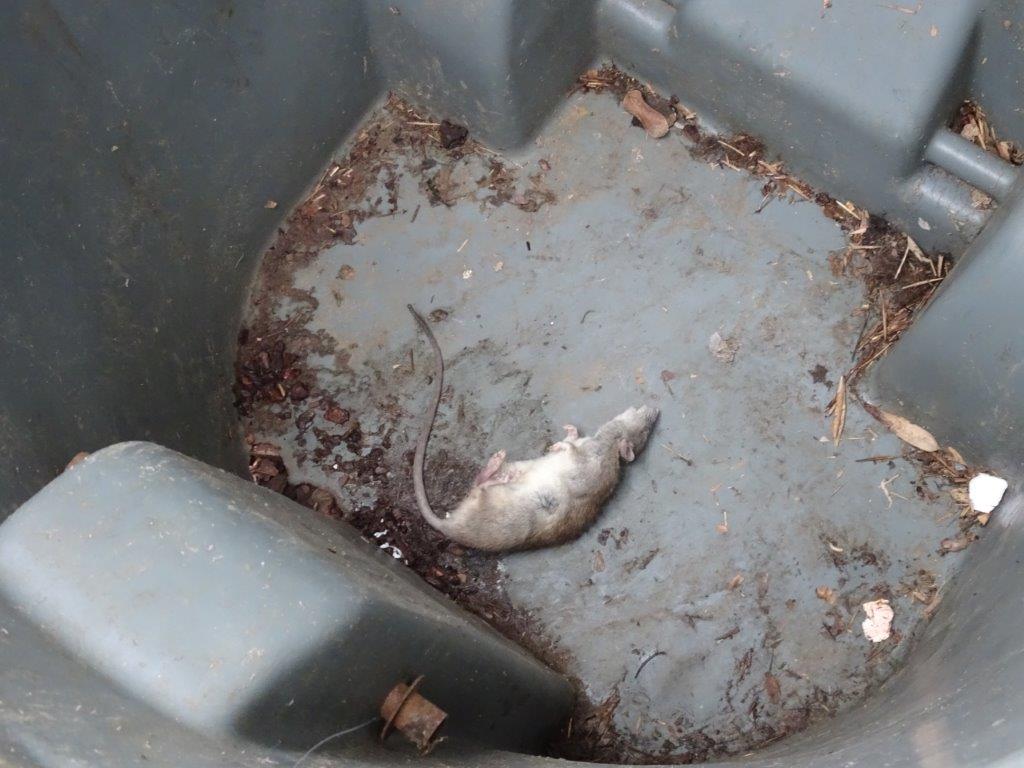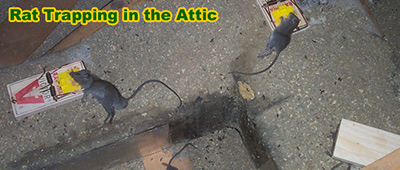The Norway rat, just like the black rat, is a rat that is often known by a number of different names. Some people know it as the Norway rat, whole others know of it as the humble common rat, or street rat. It has also been called the sewer rat and even the Hanover rat. Either way, the Norway rat, or brown rat, one of the largest rats you'll come across, and also one of the most commonly found species across the world.

Appearance
The brown rat can grow up to ten inches in length, and is usually grey or brown in color. That ten inches does not include the tail, which can grow for another ten inches again. They have sharp teeth and claws and you will obviously want to avoid, and their teeth never actually stop growing. That's they have a habit of chewing or gnawing on things - they need to do this in order to keep their teeth in check.Diet
A true scavenger, the brown rat or Norway rat will eat pretty much anything, but they do seem to particularly enjoy cereal-based products. If you're wondering what bait to use in a trap, you can go with so many things, but peanut butter seems to be one of the best options. Sweet treats also work well, but these have a tendency to attract other animals, particularly insects - bees, wasps, flies, etc. We're sure you don't want these in your home too. If you leave pet food out for your cat or dog, the rat will go after it. It will also steal feed from bird feeders if it can get to it, and if you have plants or fruits growing in your yard, it'll have a good munch through those also. When we say they will eat anything, they really will eat anything. They never know where their next meal is coming from, so they'll take every opportunity that's thrown at them.Habitat
In North America and Europe, you will find this creature in abundance, but it's believed they once originated from somewhere in China. Northern China to be exact. The only place you won't find it is in Antarctica. It's too cold for them there. For the most part, these brown rats will follow humans. They love to clear up after us, eating our leftovers, and any other food they happen to come across too. They're scavengers, you see, and humans provide the most food. That's why you'll often find rats in highly populated residential areas.Reproduction
With the right conditions, the average rat female can have multiple litters every year, and in some cases, even as many as five or more. They can mate as soon as they have had their young, even while still nursing another litter, and those rat babies reach sexual maturity at just three to five weeks of age. With a life cycle of around two to three years, particularly in residential conditions, even one female rat can fit in a serious amount of baby-making. They live in large groups, and they don't recognize incest either so they will breed with each other.Go back to the Rats in the Attic home page.

Norway rats are adaptable and crafty little fellas. They are also called brown rats, Norwegian rats, wharf rats, and sewer rats. They are typically found in cold climates. They have rough fur that is usually brownish and dull grey on the backside and light brown on the underside.
Just like other rats, Norway rats are known for causing damage to property. They also contaminate food and water supplies. The most threatening danger rats can cause to humans is the transmitting of serious diseases. This is the reason why a Norway rat infestation should be immediately acted upon.
If Norway rats start invading your property, you should definitely get to know them as much as you can. By learning their physical attributes and behavior, you can better choose the most appropriate approach in getting rid of them.
- Physical Characteristics
These little animals have thick fur that covers their bodies except their nose, ears, and tail which are bald areas. Norway rats weigh up to 200-500 grams and their total length can be up to 40 centimeters. Generally, male Norway rats are much bigger compared to female rats.
- Habitat
Despite being called Norway rats, it is believed that they originated in the northern part of China. These rats have spread throughout the world because of trade routes within China in the 18th century. Today, they can now be found in every country except Antarctica.
- Communication
Norway rats use numerous kinds of noises when communicating with their fellow rats. They also make various kinds of sounds such as squeaks and chirps when trying to intimidate a predator.
- Food and Nutrition
These rats are great foragers and they can eat a broad variety of food. Because of this ability, they can survive in different regions across the world.
Norway Rats living in urban areas don’t have a problem eating and drinking dirty leftovers and dirty water in sewers and drainages. However, their rural counterparts like to feast on plants and different kinds of proteins like lizards, fish, and other rodents.
- Reproduction
Norway rats reach sexual maturity in just 11 weeks after they are born. When they reach this period, they are ready for mating. Females get pregnant for about 21-24 days. They can give birth to up to 8 rats. Before the female rat gives birth, it creates a nest.
- Behavior
As nocturnal beings, they love staying in dark and confined places. They avoid well-lit areas as it irritates their eyes. They take advantage of the night time when humans and other creatures are less active. They use this time to look for food sources and store up supplies.
- Senses
Touch is their main sensory input. Just like most rats, they don’t have a very good sense of sight but their sense of smell makes up for it. Their olfactory receptors are so sensitive that it can help them identify if a certain object is harmful to them or not.








